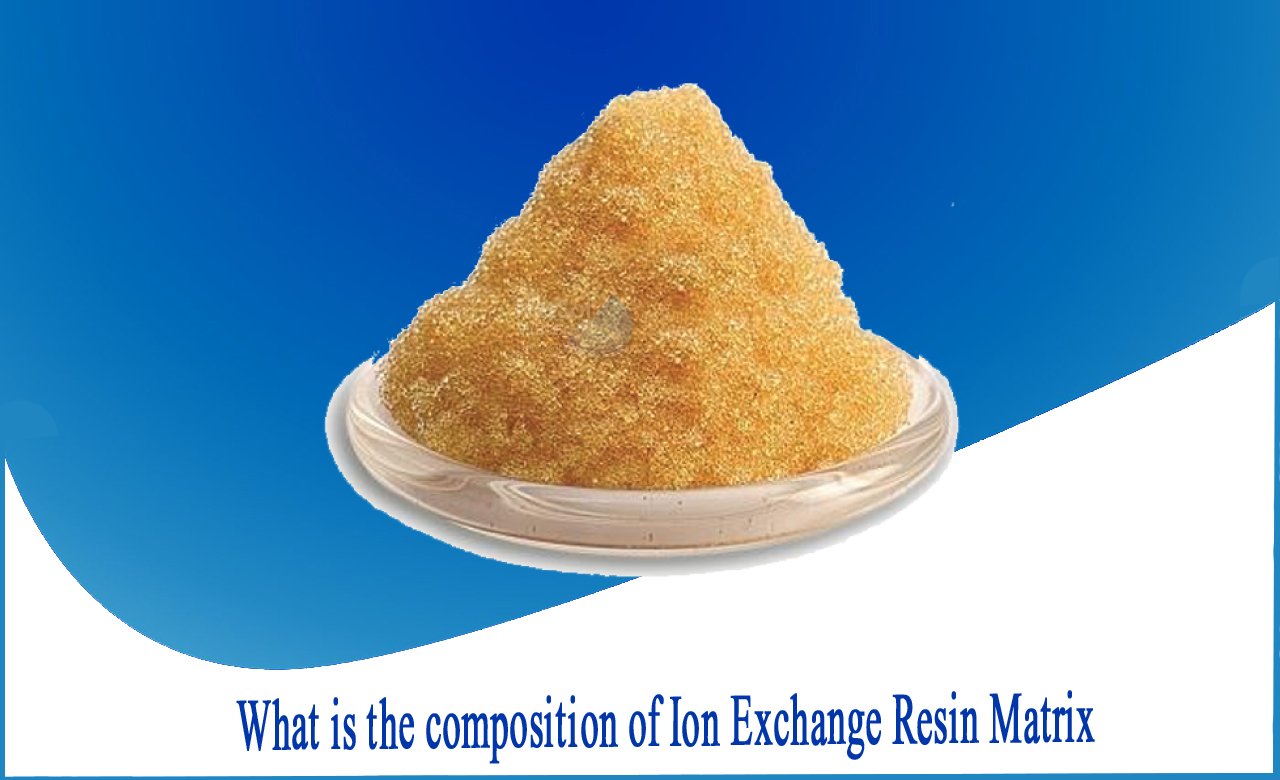What is the composition of Ion exchange Resin Matrix?
Ion-exchange resins are insoluble polymers with a cross-linked polystyrene backbone and ion-active group side chains. Polymers with functional groups linked to them are referred to as ion exchange resins. The resins are made in various phases, the two most important of which are:
I) The resin matrix is polymerized.
II) Ion exchange groups are connected to the matrix for functionalization.
Composition of Ion-exchange resin matrix
The major raw materials for manufacturing ion exchange resin are styrene and acrylic acid. They generate a long molecular backbone and crosslink a polymer with a chain network backbone structure, respectively, by reacting with the crosslinking agent divinylbenzene. Styrene resin is utilized first, followed by acrylic resin. A polystyrenic matrix is used in around 90% of all ion exchange resins.
Ion-exchange resins are solid particulate materials that contain active groups of a basic or acidic nature with mobile ions and are highly insoluble in water and common solvents.
The following are the most popular compositions:
1: Resins that exchange strong acid cation (SAC): Strong acidic cation exchange resins are made consisting of a polystyrene matrix with a sulphonate (SO3–) functional group charged with sodium ions (Na2+) for softening or hydrogen ions (H+) for demineralization.
2: Resins that exchange weak acid cation (WAC): WAC resins are made comprised of acrylic polymers that have been carboxylic acid functionalized with sulphuric acid or caustic soda. These resins are often used to selectively remove cations associated with alkalinity because of their high affinity for hydrogen ions (H+).
3: Resins that exchange strong base anion (SBA): SBA resins are made up of a polystyrene matrix that has been chloromethylated and aminated in order to fix anions to exchange sites. Type 1 SBA resins are made by adding trimethylamine, which produces chloride ions (Cl–), while Type 2 SBA resins are made by adding dimethylethanolamine, which produces hydroxide ions (OH–).
4: Resins that exchange weak base anion (WBA): WBA resins are typically made out of a chloromethylated polystyrene matrix, which is then aminated with dimethylamine. Because WBA resins do not contain exchangeable ions, they are employed as acid absorbers to remove anions associated with strong mineral acids.
5: Resins that chelate:Chelating resins are the most prevalent specialty resins, and they're utilized to remove specific metals and other chemicals selectively. The resin matrix is usually made of polystyrene, although functional groups can be made of a number of materials, including thiol, triethylammonium, and amino phosphonic acid, among others.
What is an Ion-exchange resin used for?
Ion-exchange resins are employed in a variety of processes, including water softening and desalination, rare metal isolation, metal waste regeneration, purification and separation of various chemicals, and as a catalyst for organic synthesis. The ionic composition of the treated liquid can be changed without affecting the overall amount of charge in the liquid before the exchange procedure.Ion exchange resins soften water by replacing the cations of sodium chloride with sodium ions (and the anions with chloride ions). They can also be used to demineralize water by replacing the cations with H+ ions and the anions with OH ions.
Conclusion
Professionals in the water quality business can provide more extensive assistance and specialized recommendations when it comes to selecting the proper water treatment for residential or industrial water softening. Netsol Water products and solutions can provide the water your plant requires at every stage!
Our professionals will check the customer's location first, then explain the available options and thus allow you to select what is best for your property. You can always find useful information by liking and following us on YouTube and LinkedIn.
For further inquiries or product-purchase-related questions, give us a call at +91-9650608473 or email at enquiry@netsolwater.com.



